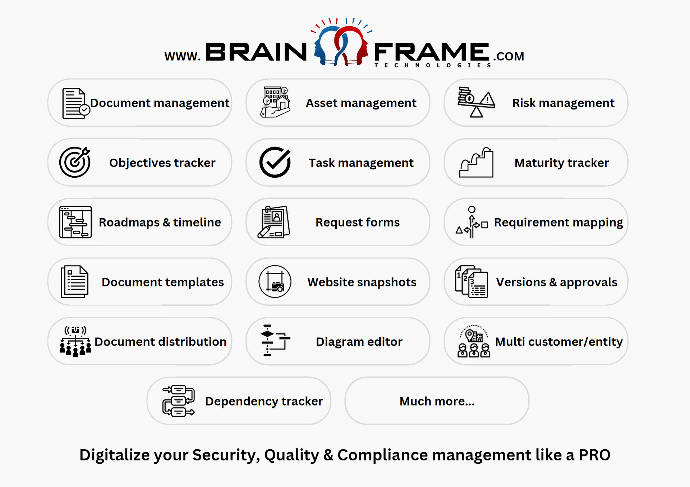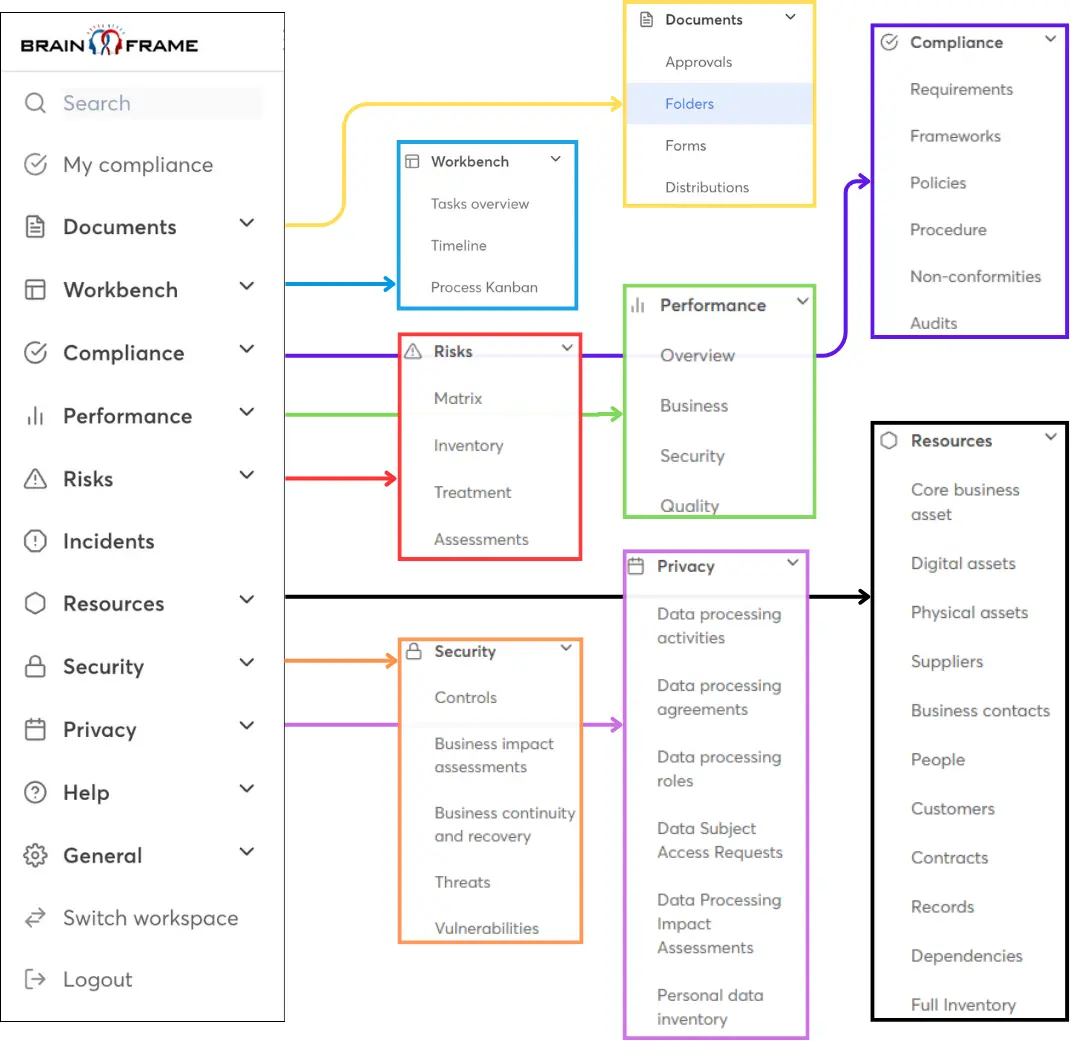The Evolution of GRC in the Digital Age
In today's dynamic business landscape, the convergence of technology and governance has led to a profound transformation in Governance, Risk, and Compliance (GRC) practices. From their inception to their current state, GRC practices have evolved significantly to address the challenges and opportunities presented by the digital age.
From its humble beginnings in ancient civilizations to its modern, technology-driven forms, GRC has played a pivotal role in shaping how organizations manage risks, ensure compliance, and achieve their strategic objectives.
In this article, we'll embark on a journey through time to explore the evolution of GRC, from its early origins to its relevance in the digital era. We'll delve into historical references, real-world examples, and the role of technological advancements in shaping the landscape of GRC practices.
Early Beginnings of GRC
The roots of GRC can be traced back to ancient civilizations, where rudimentary forms of governance, risk management, and compliance were practiced. From Hammurabi's Code in ancient Mesopotamia to the Twelve Tables of Roman law, early societies established rules and regulations to govern behavior and resolve disputes.
However, it wasn't until the early 20th century that modern GRC practices began to take shape. The aftermath of the Great Depression and subsequent financial crises highlighted the need for regulatory oversight and governance reforms.
Evolution of GRC Practices
Throughout the 20th century, GRC practices evolved in response to changing regulatory environments, technological advancements, and emerging risks. The adoption of frameworks such as the Committee of Sponsoring Organizations of the Treadway Commission (COSO) and the International Organization for Standardization (ISO) standards laid the foundation for structured approaches to governance, risk management, and compliance.
The advent of the internet in the late 20th century brought new challenges and opportunities for GRC. Organizations faced increasing cybersecurity threats, data privacy concerns, and regulatory complexities in the digital age. As a result, GRC practices began to incorporate technology-driven solutions, such as integrated GRC platforms, risk assessment tools, and compliance tracking mechanisms, to address these evolving challenges.
Key Features of Modern GRC Solutions
Modern GRC solutions are characterized by several key features that differentiate them from traditional approaches:
- Centralization: Integrated GRC platforms provide a centralized repository for managing all governance, risk, and compliance-related information. This centralized approach improves visibility, accessibility, and collaboration among stakeholders across the organization.
- Automation: Automation capabilities streamline repetitive tasks, such as risk assessments, compliance monitoring, and reporting, reducing manual effort and minimizing human error. Automated workflows ensure consistency, efficiency, and compliance with established policies and procedures.
- Reporting and Analytics: Advanced reporting and analytics tools offer real-time insights into the organization's risk posture, compliance status, and emerging threats. Interactive dashboards, customizable reports, and predictive analytics empower decision-makers to proactively identify and mitigate risks.
- Scalability and Flexibility: Modern GRC solutions are designed to scale seamlessly with the evolving needs of organizations. Whether expanding operations, entering new markets, or adapting to regulatory changes, these solutions offer flexibility and agility to support growth and innovation.
Historical Hacks and Relevance of GRC Historical cyberattacks and data breaches serve as clear reminders of the importance of robust GRC practices in the modern era. Events such as the Equifax data breach in 2017, which exposed the personal information of over 147 million individuals, underscored the need for organizations to strengthen their cybersecurity defenses and enhance their GRC capabilities.
Brainframe: Pioneering GRC Solutions for the Digital Age In today's complex regulatory environment, GRC Management is essential for organizations to navigate risks, ensure compliance, and achieve their strategic objectives. Brainframe, for example, offers a comprehensive solution that streamlines GRC processes, enhances risk management, and supports you to achieve regulatory compliance. By providing centralized documentation, risk assessment tools, compliance tracking mechanisms, and quick access to a network of specialists for support, Brainframe empowers organizations to effectively implement GRC Management practices and drive efficiency, effectiveness, and strategic alignment within their operations.
Looking Ahead: The Future of GRC in a Digital World As we look to the future, the evolution of GRC shows no signs of slowing down. Emerging technologies such as artificial intelligence, machine learning, and blockchain are poised to further revolutionize GRC practices, enabling predictive analytics, automated risk assessments, and enhanced data security.
With Brainframe at the helm, our solution is meticulously crafted to align seamlessly with the evolving landscape of GRC, ensuring that organizations stay ahead of the curve and embrace the future with certainty and vigor. The digital age presents endless possibilities for innovation and growth, and as Brainframe we are committed to leveraging the power of technology to drive positive change in the world of GRC.
Conclusion: Taking Action in the Digital Era
The evolution of GRC from its early beginnings to its relevance in the digital age underscores its critical importance for organizations navigating today's complex business landscape. As we've explored, GRC practices have evolved from manual, fragmented approaches to sophisticated, integrated solutions, driven by technological advancements and regulatory demands.
Now, more than ever, organizations must proactively embrace GRC to safeguard their assets, mitigate risks, and ensure compliance with regulatory standards. The digital age presents both challenges and opportunities, and effective GRC management is essential for organizations to thrive in this rapidly changing environment.
In that case, we urge you to take action. Assess your organization's current GRC practices, identify areas for improvement, and explore innovative solutions such as Brainframe to streamline your GRC processes. By investing in robust GRC frameworks and leveraging technology-driven solutions, you can enhance your organization's resilience, agility, and competitiveness in the digital era.
Don't wait until it's too late. Seize the opportunity to strengthen your organization's GRC capabilities and position for success in an increasingly interconnected and regulated world. Together, let's embrace the future of GRC with confidence and determination.

Start for free now!
Streamline your GRC work using our all-in-one management solution and get access to our network of local specialists
